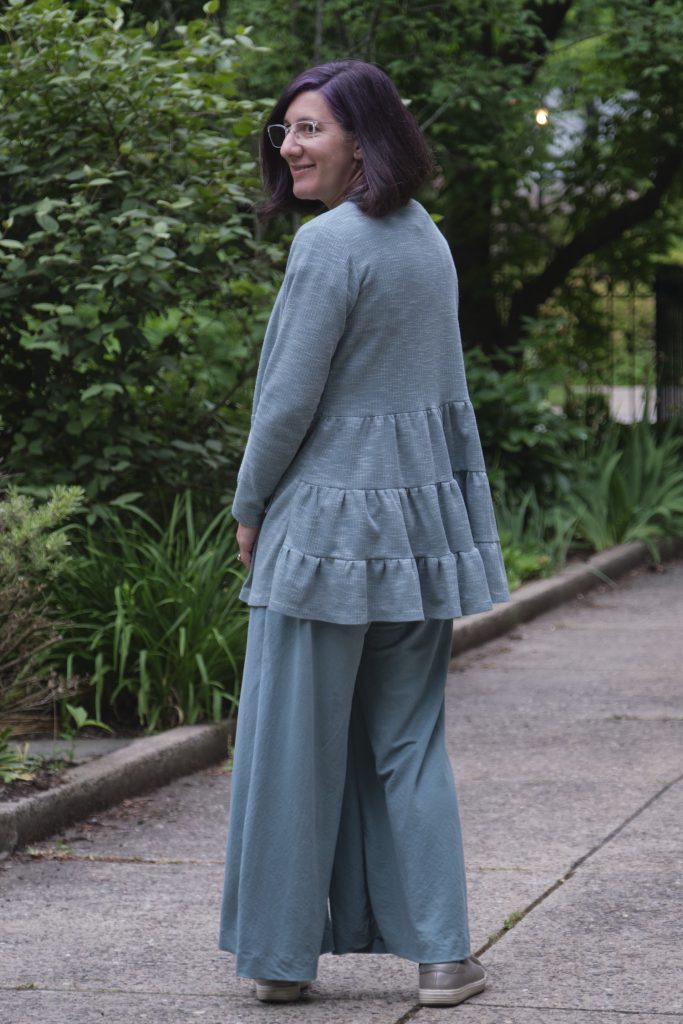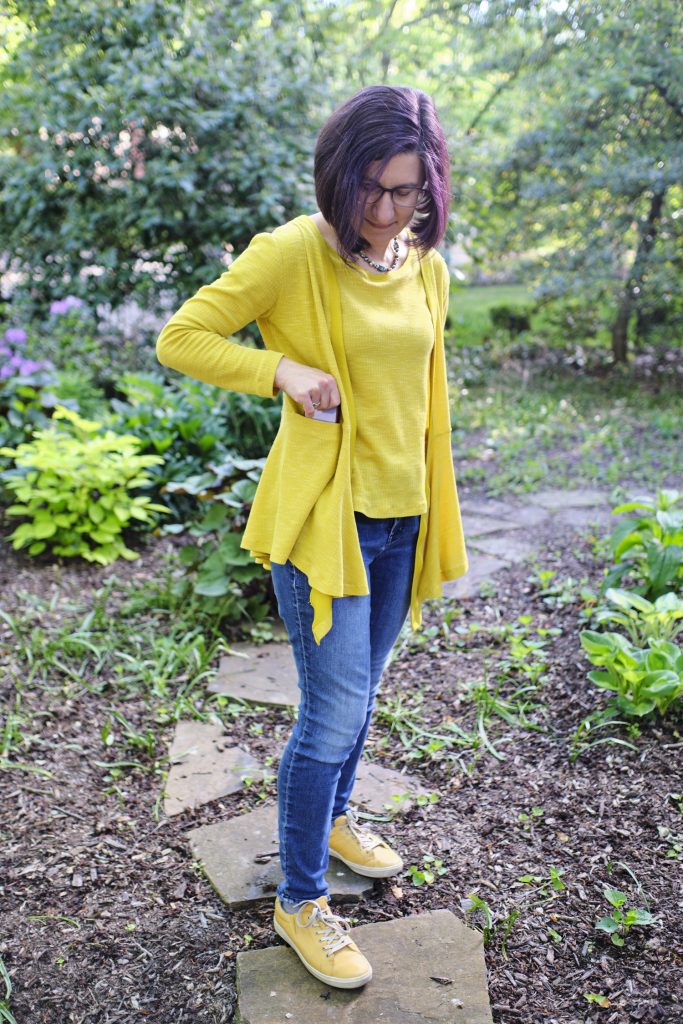When I saw the Sinclair Harper cardigan hack on the SewYouThinkYouCanSew blog about a year ago I knew I wanted to give it a try. This hack is based on an Anthropologie Cardigan. I loved the look so much that I bought the same fabric, Impressionist Double Sweater Knit in eucalyptus from Serge Fabrics. Then I got busy with other projects, including a Sinclair Laura cardigan in the tea leaf color of the Impressionist Double Sweater Knit. When I bought Pylos LiKinit in seafoam and discovered it was exactly the same color as eucalyptus, I knew it was time to make a seafoam/eucalyptus outfit (see my post on my Pattern Emporium Urban Boldly mashup pants).

I followed the instructions for the Harper cardigan hack on the blog with a few modifications. I started with a size 6p. Since I prefer not to have neckbands that creep up my neck, I lowered the back neck band and narrowed the whole band, just as I had done for a previous Harper sweater I made. I used patch pockets (but without the top band) but still split the front pieces as was done in the hack. I also added a slight flare to the outside seam of the lower front pieces. I omitted the sleeve cuffs and lengthened the sleeves slightly to compensate. I was able to cut all the pieces from 1.5 yards of fabric in my size. I’m very happy with how the ruffled harper came out! It is a jacket I can wear to work and look professional, with a fun ruffle in back. This one is a light-weight sweater knit good for spring and fall or keeping warm in overly air-conditioned buildings. I might make a warmer one for winter in French terry or a cozy sweater knit.

Since I had fabric leftover I made a Sinclair Cache top to go with the cardigan. I followed the cache pattern but added a scoop neck and cut the back hem to match the front. I actually don’t love how the Cache came out in this fabric with the scoop neck as it doesn’t lie flat under the cardigan, but I’ll wear it anyway.





















